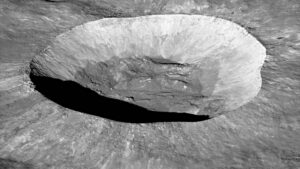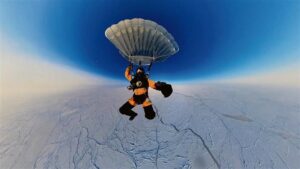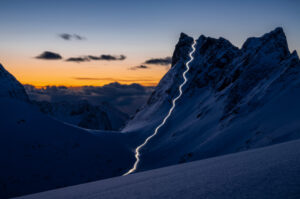Since the golden age of master Antarctic photographers Frank Hurley and Herbert Ponting, we’ve known that while the white continent may be the most inhospitable place on Earth, it is also one of the most hospitable for ambitious photographers.
Not many years ago, the only way for a private traveler to reach Antarctica was by ship on long, committing expeditions, as Hurley and Ponting had. Indeed, every austral summer, dozens of cruise ships still make the crossing from South America to poke about the continent’s outer fringes, usually the Antarctic Peninsula. But for the past three decades, Antarctic Logistics & Expeditions (ALE) has also made it possible to explore the exotic gems of the interior.
ALE staff and customers have captured thousands of images that depict both Antarctica’s beauty and its isolation. ALE’s image bank includes the work of several notable photographers, including David Rootes, Russ Hepburn and Carl Alvey. Here is a sample of Antarctica’s visual highlights:
Wildlife

Emperor penguin colony beside iceberg. Photo: David Rootes/ALE
Emperor penguin colonies are abundant in Antarctica, but most are in locations difficult for cruise ships to access, but easy for ALE’s Twin Otters. The largest of all penguins, and the only species to breed during the Antarctic winter, Emperors trek 50 to 120km over the ice to breeding colonies of several thousand individuals.

Emperor penguin colony, backlit by the midnight sun. Photo: David Rootes/ALE

“You vomit up the fish this time.” “No, you.” Photo: Russ Hepburn
Weddell seals are the most southerly mammal to permanently inhabit the continent. The Weddell seal was discovered and named in the 1820s by British sealing captain James Weddell, who made several expeditions to what is now known — of course — as the Weddell Sea. Like many animals in Antarctica, these placid creatures are trusting because they are untroubled by natural predators, so they allow a close approach. In this sense, Antarctica is a polar Galapagos.

A Weddell seal mugs for the camera. Photo: Hannah McKeand/ALE
Landscapes
Photographers have long known that bright colors work well in polar regions — what is dubbed National Geographic Red is a standard choice of parka colour — and the bright Twin Otters that ALE uses to shuttle passengers to remote Gould Bay and elsewhere likewise pop out of the monochromatic landscape.

Photo: Russ Hepburn/ALE
At 3,052m, Mount Liptak in the Sentinel Range of the Ellsworth Mountains, below, is nowhere near the tallest mountain in Antarctica. Nevertheless, its sharp jawline erupts beautifully from the white bone of the ice cap, as photographed from neighboring Mount Allen.

Photo: Pachi Ibarra/ALE
Twenty-one kilometres long, 13 km wide, and about 1,200km from the South Pole, the Vinson Massif likewise lies within the Sentinel Range. It overlooks the Ronne Ice Shelf, near the base of the Antarctic Peninsula. Its highest peak, 4,892m Mount Vinson, below, is not only the roof of Antarctica but also the most recently discovered and climbed of the Seven Summits.

Climbers approach Vinson Base Camp. The circumflex-shaped summit of Vinson peeks out of the clouds behind. Photo: Russ Hepburn/ALE

The biffy at Vinson Base Camp, as a plume of snow streams off Mount Silverstein, background right. Photographers crank down the aperture on their wide-angle lenses to get those gleaming sunstars. Photo: John Beatty/ALE

Union Glacier’s ALE Camp is the only private base in Ellsworth Land. Photo: Russ Hepburn/ALE

Guests enjoy the view from the Three Glaciers Retreat. Photo Christopher Michel/ALE
An aerial view of Three Glaciers Retreat, below, shows the staff tents, dining room, showers, toilets, Twin Otter and guest suites. Note the volleyball court.

Photo: Christopher Michel/ALE
Natural Phenomena

Lenticular cloud above Mount Sidley. Such clouds, indicating high winds aloft, have occasionally been mistaken for flying saucers. Photo: Russ Hepburn/ALE

Giant snow (rime) mushrooms on Mount Sidley. Photo: Tre-C Dumais/ALE
Rime mushrooms form when clouds and strong winds engulf the terrain. Supercooled cloud droplets blow onto subfreezing surfaces and freeze rapidly, making an opaque rime with air trapped between the granular deposits.

Snow mushroom on Mount Sidley’s summit ridge. Photo: Scott Woolums/ALE
Blue ice occurs when snow falls on a glacier and eventually compresses to become part of the glacier. Air bubbles are squeezed out under pressure and ice crystals enlarge, making the ice appear blue.

Formations of hard blue ice at the Drake Icefall. Photo: Iain Rudkin/ALE

Swirls, cracks and bubbles create intricate patterns in ice. Photo: Ben Cockwell/ALE
At the South Pole, all directions are north!

Photo: Rob Smith/ALE
Climate
In the polar regions, overcast weather can kill all shadows and obscure the horizon line, making it impossible to see ups and downs. You can ski off a drop without noticing it’s there and trip over sastrugi that are completely obvious in better light. Sometimes, you can only tell you’re going uphill by how difficult the hauling becomes.

Photo: Carl Alvey/ALE
As a lover of black and white photos, I was won over by Ungar’s use of composition, perspective and light to give a feel for the extreme cold and the bleakness of approaching storm clouds.

A Twin Otter refuels at Thiel Corner. Photo: Adam Ungar/ALE
Antarctica’s average annual temperature ranges from about −10°C on the coast to −60°C at the highest parts of the interior. Summers, fortunately, are milder: the coast can exceed 10°C at times, while over the elevated inland, temperatures can rise to −30°C. Comparatively balmy compared, at least, to −80°C in winter.
The lowest temperature ever recorded on the Earth’s surface was −89.2°C at Vostok Station, Antarctica on 21 July 1983.

Two people ski at Union Glacier, despite the strong winds stirring up snow smoke in the distance. Photo: Ben Cockwell/ALE
The windiest place on earth, Antarctica’s strong airflow comes mainly from gravity rather than weather systems. Cold, dense air flows down the Antarctic plateau like an invisible avalanche, gathering speed and creating what are called katabatic winds. Velocities can easily exceed 100kph and can persist for days. Good for kite skiers, poor for barbecues.

Snow-covered emperor penguin chicks huddle together during a storm, protected to some extent by the adults, which cluster into a kind of penguin windbreak. Photo: David Rootes/ALE
Not that the weather is always bleak, windy or hostile. The strong sunshine often trumps the always-cold air. Haulers this year, for example, have enjoyed weeks of sun-filled days and nights.

Photo: Carl Alvey/ALE
Action
ALE allows adventurous travelers to alpine ski, cross-country ski, manhaul, skydive and climb. Photographers can focus on small-figure-in-big-landscape shots — essentially, landscape photos in which a human figure adds scale — to tighter compositions that emphasize action.

An ALE guide skis down Mount Vinson, as its massif curls off into the distance. Photo: Dylan Taylor/ALE

Last Degree skiers, well-accoutered for photography in red parkas, haul across the polar plateau. Photo: John Beatty/ALE

Expedition skiers rest among sastrugi, which look subtle from a drone but are bumpy to ski over, especially if you travel perpendicular to their direction. Photo: Rob Smith/ALE

Skiers take their final steps to the Ceremonial South Pole. Photo: David Rootes/ALE
In Antarctica, you can even skydive or wingsuit. Look at it this way: the landings under canopy are gentler on the snow compared to hard ground.

A skydiver lands at Union Glacier, pulling down on his control toggles to flare the chute just before landing, which lessens the impact. Enterprise Hills in background. Photo: David Rootes/ALE

A wingsuit jumper lands near Union Glacier Camp. Photo: Heather Swan/ALE

Climbing vertical ice at Charles Peak Windscoop, Union Glacier. Photo: Chris Nance/ALE

An ALE guide leads a client to the rocky summit of Sutton Peak. Photo: Winslow Passey/ALE

A climber trudges up north face of Mount Rossman, in the company of his shadow. Shadows on snow are blue, not grey. Photo: Winslow Passey/ALE
Getting good photos in Antarctica is relatively easy, but coming home with great ones take more effort. Some tips to help you make the most of your photographic opportunities:
1. Use a waterproof bag to protect your gear
In Antarctica’s dry, cold environment, snow may not bother your equipment when you’re shooting, but if you bring your gear into one of ALE’s heated shelters, the condensation and melting can cause problems. You don’t want to leave the pack outside — sensible in some cold environments — because snow drift can bury it. Instead, protect your gear inside a dry bag, backpack or camera case.
2. Consider separate bodies
A second camera is a worthwhile investment not just in case one fails, but so that you are not constantly swapping lenses in the cold. Contrary to what many beginners think, telephoto lenses are not just for wildlife or sports; many landscapes look better using the compression and tightening that a big barrel provides.
3. Tripod or no?
There is so much light in Antarctica, and modern cameras allow you to crank up ISO levels, so you no longer need a tripod to avoid camera shake. Some photographers still like to bring one, though, because it slows down picture-taking and helps them compose more carefully through the viewfinder.
4. Use a polarizing filter
You can do a lot with digital photography tools these days, but the effect of polarizers still cannot be duplicated. They cut glare from snow crystals, selectively darken blue skies and remove any haze from moisture in the air.
5. Shoot penguins interacting
Those cute little penguins are everywhere, and they are adorable, but remember that this is their home: Don’t get so close that you disturb them. And once you’ve had your fill taking full-frame portraits, turn your attention to behavioral shots. Try to capture them doing something or interacting.
6. A seal looks best when it’s gazing straight at you or yawning
Out of the water, seals are big, sedentary slugs. They don’t do much. For a better photo, wait until the seal looks right at you with those big eyes and yawns, baring its teeth.
7. Capture a whale’s tail in front of an iceberg
Getting a picture of a whale entirely out of the water, breaching, is rare. It’s much easier to get just the tail as it dives underwater after grabbing a gulp of air. Try to frame that tail in front of a cool-looking iceberg. It tells a better story than just a close-up of the tail itself.
8. Give a sense of scale to icebergs
Icebergs come in all shapes and sizes, but to give perspective, you need something else in the photo — a human figure, a ship, something to convey the massive size of that pyramid of ice.
9. Follow ALE’s packing list
Remember that you can always wear less stuff when you are there, but you don’t want to forget to bring your long underwear. There are people who do!

A South Pole marker celebrates the centenary of the Amundsen and Scott expeditions to the South Pole. Photo: John Beatty






